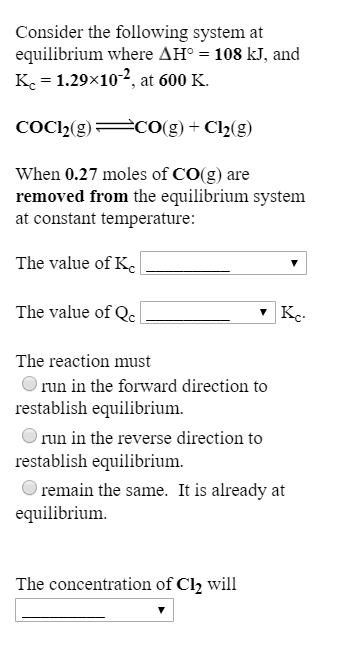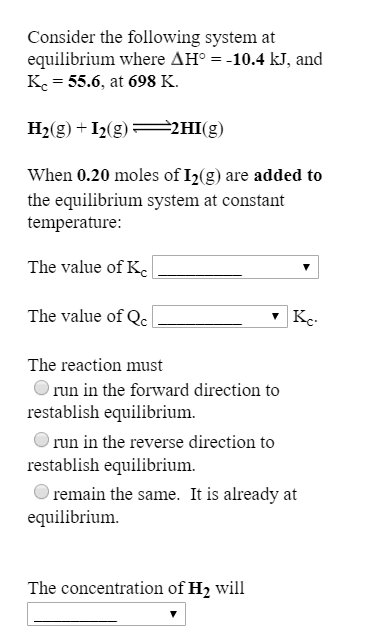Chemistry 1027A/B Chapter Notes - Chapter 1.1: Endothermic Process, Gibbs Free Energy, Reaction Quotient
Document Summary
A system is at equilibrium when the number of liquid and gaseous molecules in the system becomes constant, however both the forward and reverse processes are still occurring. A system at equilibrium is dynamic, and not static. The equilibrium constant (k) can be measured using pressures (kp), or using concentrations (kc) If all the components are in the same phase, the system is a homogeneous equilibrium. If the components are not all in the same phase, the system is a heterogeneous equilibrium. Solids are not included in the equilibrium constant expression. A general equilibrium reaction is written as: The equilibrium constant expression for this reaction is written as: When reversing an equilibrium reaction, the new k value is 1/koriginal. When multiplying an equilibrium reaction by some coefficient #", the new k value is k# If k>1, the equilibrium lies towards the right (product side), which indicates there is more products than reactants.





